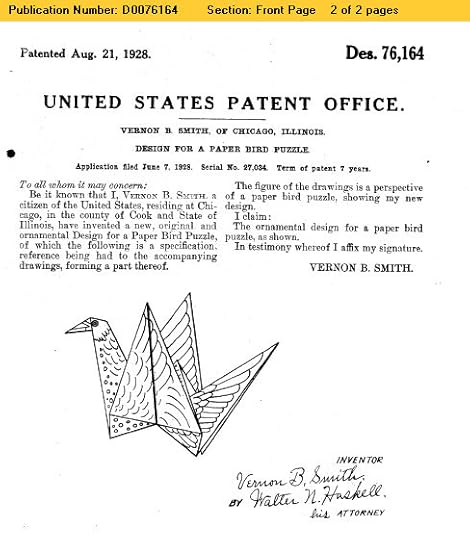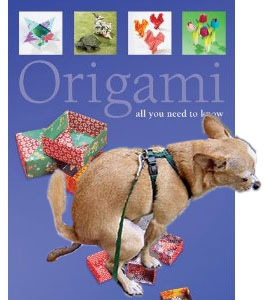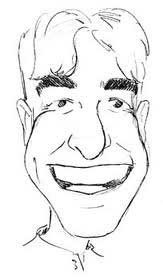Nick Robinson's Blog, page 35
September 20, 2012
Projeto Giramundo
August 31, 2012
What’s my line?
People sometimes complain that I don’t add enough new folding material to this blog. They are not content with reading the *pearls* of wisdom to be gleaned from my every utterance. Some may think all I do is talk about it. I had a fantastic facebook exchange with a young folder, questioning my devotion to the art:
XX You like origami right?
Nick errrr yes. Why do you ask?
XX To make sure. how long have you been folding origami?
Nick 37 years. Next dumb question?
XX Next dumb question? I can fold everything you can and i have only been folding for 3 years.
Nick You seem to see it as some kind of competition. To me it’s an art-form that requires a lifetime to master. Having written 40 books on the subject, it’s rather weird to be asked if I like origami. I apologise for my rudeness – I didn’t realise how young you were!
XX I have mastered it in 3 years. i did not know that you were famous.
I did lose it rather, but asking questions to make sure I like origami? How delightful to have mastered it in only three years ;) Hmmm! Anyways, I’ve dug up an old design for which the diagrams remained unfinished for many long years, just to prove that I do fold now and again.
It’s highly probable that it’s not original, but what I liked about it was the sequencing. I’m always banging on about how important it is to find a good, flowing sequence, I thought I’d share this as an example. Hopefully, a fairly routine fold becomes fun to do?
[image error]
August 30, 2012
Flappin’ Heck!
I had a fascinating email from W Brown esq. recently, pointing out that the fairly well-known flapping bird has actually been patented! On August 1st 1928, Vernon B Smith of Chicago, Illinois, was approved as the owner of a “design for a paper bird puzzle”. It’s not totally clear whether the “design” refers to the pattern drawn on the model, or the design of the model itself.
If it’s the latter, there’s quite a few people around the world who have breached this patent and the estate of V Smith will be owed a large fortune! So think next time you fold a flapper, who owns it?

August 27, 2012
Spiral : Tomoko Fuse
 Hardback, 346 pages 10”x8” published by Viereck Verlag, Germany
Hardback, 346 pages 10”x8” published by Viereck Verlag, Germany
Where do you begin to review a book as beautiful as this? I was privileged to see it as a work in progress over a year ago and even then, I knew it would be something very special indeed. A little scene-setting may be in order.
Paulo Mulatinho and his partner Silke Schroder formed Origami Deutschland in 1989 and began producing what to my eyes was the most attractive origami magazine in the world. Paulo focussed his talents as a graphic designer and photographer on expressing his love for origami. Over the years, their company Viereck Verlag has grown into a world-class supplier of origami paper and books and even expanded into the flat beneath their own in Freising, Germany, to present world-class exhibitions in the Origami Galerie.
 In all these activities, Paulo has insisted on the highest possible standards of both design and presentation, regardless of the cost. This approach is probably unique in a world where recession is raging and almost everything is produced with cost as the most important factor. It is also the reason why this book is so special. Paulo could easily have compiled a variety of diagrams, shot some beautiful photos and had it printed somewhere in China using two colours.
In all these activities, Paulo has insisted on the highest possible standards of both design and presentation, regardless of the cost. This approach is probably unique in a world where recession is raging and almost everything is produced with cost as the most important factor. It is also the reason why this book is so special. Paulo could easily have compiled a variety of diagrams, shot some beautiful photos and had it printed somewhere in China using two colours.
But he didn’t. He had it printed at a local printer where he could ensure every facet of the printing was of the highest quality. Despite being a superb photographer himself, he commissioned a highly respected local photographer called Herbert Bungartz and flew Tomoko Fuse over to shoot a huge number of exquisite photographs for the book. When I expressed some worry about the potential cost of a project conducted to these standards, Paulo simply replied “Money cannot be an issue, it must be done properly”.
It may be that his entire creative life has been leading up to this point, a culmination of dozens of previous publications and projects, where he decided that he would simply express his love for origami and the work of Fuse in its purest form, with no concession to the time and money it would require. The resulting book is quit simply the most beautiful “origami” book I have ever seen. Every page is a masterpiece of design and beauty functioning together to exemplify the principles of the Bauhaus that Paulo loves so much.
In many ways, to call this an “origami book” is to hugely undervalue it, since it is so far removed from the typical diagram collections that we are so used to. With some of Akira Yoshizawa’s books, I usually turn to the opening sections where there are some beautiful photographs of the models. With Spiral, I get the same feeling of delight on almost every single page.

So, to the contents. I shan’t list individual models, suffice to say it is a comprehensive collection of dozens of Fuses exquisite spiral designs. The book is divided into five parts; Helices and Spirals, Spiral Shells, Whirlpool Spirals, More Helices and Spirals and a part presenting biographical information both about and by Fuse herself. It too is exquisitely presented and fascinating to read.
 You will need to be a competent folder to achieve good results, many designs start with asymmetrical paper and creases that must be put directly in place. However, the beauty of the models shown is a constant spur to raise your folding to the required standards. Text is used sparsely, often to explain some point of geometry or creative background. I must mention Heinz Strobl here, who did much of the proofing of the diagrams and geometric information, no small task. His work was augmented by the not inconsiderable skills of our own David Brill.
You will need to be a competent folder to achieve good results, many designs start with asymmetrical paper and creases that must be put directly in place. However, the beauty of the models shown is a constant spur to raise your folding to the required standards. Text is used sparsely, often to explain some point of geometry or creative background. I must mention Heinz Strobl here, who did much of the proofing of the diagrams and geometric information, no small task. His work was augmented by the not inconsiderable skills of our own David Brill.
On the Viereck Verlag website, you can see many stunning images from the book. It costs 78 euros (plus postage, I assume) but my advice is to make whatever sacrifices you have to in order to own this superb book, you simply won’t regret it. I’d also s uggest that in buying it, you are helping to support the team that produced it and to help repay their substantial investment. They have set new standards that I doubt many (sadly, including myself) will be able to follow. My dream is that after a long holiday, Paulo may possibly decide to produce another book of the same quality. We can only hope so…
uggest that in buying it, you are helping to support the team that produced it and to help repay their substantial investment. They have set new standards that I doubt many (sadly, including myself) will be able to follow. My dream is that after a long holiday, Paulo may possibly decide to produce another book of the same quality. We can only hope so…

August 26, 2012
Planes and boats and… planes and planes and planes…
 It’s both impressive and depressing to see that a book I wrote for a flat fee in 1998 continues to be republished in new formats and languages around the world. The book was originally “How to make and fly paper planes” and you can read details here. If anyone has copies of the overseas editions, I’d love one for my archive.
It’s both impressive and depressing to see that a book I wrote for a flat fee in 1998 continues to be republished in new formats and languages around the world. The book was originally “How to make and fly paper planes” and you can read details here. If anyone has copies of the overseas editions, I’d love one for my archive.
It’s actually quite unusual for publishers to pass on reprints and foreign language editions to authors. You’d think it was a relatively small and simple gesture, but no, it’s all about squeezing an extra few quid out of the product.
August 25, 2012
Learning Skills?
I was chatting with my mate Yawn Beworn the other day about the best way to learn origami. One to one teaching came out top, but that’s not always possible or practical for would-be folders. We’ve used diagrams for many years and the trend has been that they get better and better (check out Rikki Donachie’s work in the book by the late Rick Beech, “Origami You Can Use”). In terms of sheer efficiency, a good set of diagrams takes some beating, yet people still struggle sometimes to follow them.
The advent of cheap digital cameras with video facilities has opened a huge new world of opportunity for origami instructions. At their worst, they can be pretty useless, but at their best, have to be about the best practical way to illustrate the folding sequence for a given design. They are cheap and easy to produce and as long as you get the lighting, angle and focus correct, plus a clear, audible commentary. A cursory tour of youtube shows the crazy amount on offer (though most are far from brilliant), with the added bonus that some are by people with real ability, such as Eric Gjerde showing how to do a Fujimoto triangular crease pattern – is this the best way to learn these days?
August 17, 2012
Halloween Origami
 My next book should be out in August, published by Dover. I’m delighted to say I did the illustration, layout, text and photography for it. You can get a preview here.
My next book should be out in August, published by Dover. I’m delighted to say I did the illustration, layout, text and photography for it. You can get a preview here.
Right, the werewolf (final project in the book)
August 16, 2012
Those were the days, my friend
I found this old photo in a dusty box recently, a press photo from the launch of my first book in 1991. Was it really so long ago??? (click to enlarge)
August 15, 2012
How many more times?
 Quarto are a publishing company who are all to quick to recycle their own products with new titles. The latest is “Origami: All You Need to Know” by Ashley Wood. This book is a straight reprint of the authors previous book the “Origami Bible”. Not only did that book recycle a title of one of my books, it was simply a collection of previous designs published in earlier books by the same company, nothing new to be found anywhere within.
Quarto are a publishing company who are all to quick to recycle their own products with new titles. The latest is “Origami: All You Need to Know” by Ashley Wood. This book is a straight reprint of the authors previous book the “Origami Bible”. Not only did that book recycle a title of one of my books, it was simply a collection of previous designs published in earlier books by the same company, nothing new to be found anywhere within.
To make things worse, nearly half of the designs don’t credit the creators of the model, even though the company must have known who they were. Some of them are mine, but I recognise many more. When the faux Bible came out, I contacted them, saying how disgusting it was that they hadn’t credited all creators, much less sought their permission. They said “OK, we’ll ask you to identify them next time”. Needless to say, I haven’t heard from them since and now find this latest crock in the bookshops.
This kind of shoddy production reflects very poorly on the originating publisher, Quarto, who farm this out via various imprints. OK, it’s a cheap and legal option to recycle old products and few of the buying public will realise, but it’s just lazy and shows a total lack of artistic integrity not to at least credit those whose work they are milking dry.
They have a long history of doing this and Paul Jackson has suffered more than most at their hands. One book came out, under his name, with photos from my airplanes book (for the same company) on the cover. I rang him to ask what was happening, he didn’t even know about the book, hadn’t been consulted, much less paid.
So, here’s the list on ama$on, all with identical contents (as far as I can tell) and to be avoided like the plague. Feel free to add suitable reviews after mine! I suspect after this blog post, I may not be on their “go to” list for future books, but it makes me so mad!
Rick Beech RIP

Rick by Lar deSouza
This has been a very difficult piece to write. Having known Rick for nearly 25 years, our relationship swung from highs to miserable lows and latterly to a more even keel. I wanted to be honest about things and not just apply an airbrush to his life. I hope people will forgive me if this makes for painful reading, since mental illness is still a taboo subject for many, yet so many people suffer from it to some extent.
I first met Rick in the late 1980′s at a BOS convention. he spoke admiringly about a model I had exhibited and we very quickly hit it off. He had a great sense of humour, loved origami and was wonderful company. I met his wife Julie (a truly lovely person) and we started to exchange letters on a regular basis – this was before the age of the internet, for younger readers! I still have many of these letters, they were ebullient, happy, carefree and full of mischievous humour. We supported opposing football teams and so no opportunity was wasted to have a dig at each other about this. When working in the Derby area, I met and stayed with the Beeches and Rick came up to Sheffield when he could.
After a few years in the BOS, Rick decided to follow my own path and began work as a professional paper-folder. Whilst not a creative folder, his natural charisma and acting experience made him perfect for entertaining and the dreaded art of “table-hopping” (which involved going round a room of diners, folding little presents for them and generally schmoozing). Being less outgoing, I was delighted to pass on requests for this type of work to him and concentrate myself on the more creative aspects such as commissions, authoring etc.
However, it wasn’t long before Rick began to branch out into every aspect of origami work and it soon became clear that he and I (along with Paul Jackson in London) were in effect competing for the same work. Paul and I were sanguine about this – there was enough work to go round and we bid for work on our own merits. Rick didn’t always feel this way and began to see us as encroaching on work that he felt should be his. His communications with me slowed and became more and more heated whenever I did work that he felt was rightfully his. By this time he had two young daughters and no doubt felt under huge pressure to support them financially, not an easy thing to do, as I can attest.
Sharing a train journey with him to a BOS council meeting, I became aware that Rick had mental health problems and he admitted taking his medication irregularly, resulting in quite extreme mood swings. This also resulted in a degree of paranoia and he later accused me of ringing his clients and trying to sabotage his relations with them. He also had a carefree approach to origami copyright that set him at odds with many other professionals. He saw everything as “fair game” and simply couldn’t understand the fuss that he left in his wake. Origami was his love and he wanted to share any and all of it in whatever way he saw fit.
His not infrequent intemperate exchanges with clients eventually saw him excluded from the BOS, after considerable opportunities to amend his ways. Whilst he never really understood the reasons for this, it must have hit him hard. He began to develop an alternate career in hypnotherapy and even sold a large part of his precious book collection to fund this. Over the last few years, I tried hard to repair our relationship and we once again exchanged cordial emails. His medication seemed to be keeping things stable and all his close friends hoped the promise of a new life in Canada with his fiancée Giselle would be the chance to put the past behind him. Alas, it was not to be and I can only imagine that the death of his ex-wife took him to a place from which he could see no light and he took his own life. His two daughters thus lost both parents within a week and my heart goes out to both of them. His struggles against mental illness were (sadly) not unique, nor did they justify his acerbic attacks on anyone who didn’t share his views. However, they were responsible for much of the pain in his life and probably for the ending of it.
All this is deeply sad, but it’s not the whole story of his life. At his funeral, his elder sister told me that he was devoted to origami from his early years. His folding travels took him around the world and many people who met Rick in passing were struck by what a good-natured, generous and charming man he could be. His teaching of origami was consummate and almost legendary, allowing him to successfully teach even very complex designs to his classes. His tastes in origami were also of the highest order – if he recommended a design, you could be sure it was worth folding. This is the Rick I try to remember.



